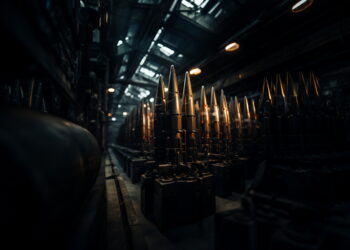A Commission program to help the environment. Next week the standards for toilets and urinals that must be respected in order to be classified green will be announced. Experts have been working on the project since 2011: “We can save up to 50% of the water consumed today”

A task force of experts, 2 years of work, 2 international meetings, and more than 20 documents and technical reports produced. Efforts have not been scarce but the results are now at hand. The European Commission is finally about to bring order to an area where anarchy reins: the operation of toilet and urinal flushing in EU countries. This is not a joke. Next week actually, the criteria will be revealed: what must be respected for flushing in order to be approved for the “Ecolabel” in compliance with the EU directive. It will just be guidelines to help producers who want “green” certification for their products.
The complex regulation has been under study for quite some time now. Work began in January 2011 and the first group meeting, composed of Commission experts and stakeholders, was held in Brussels in October 2 years ago. But the theme is delicate and a 2nd meeting was necessary: so in June 2012 the experts met again for 2 days of work in Seville. At the end of the session a 60 page report, leaving nothing to chance.
For example: what should be the flow rate of the discharge? In countries such as the Netherlands, Portugal and soon also France, toilets with less than 6 liters of flow cannot be installed, the experts pointed out. On the other hand, in the UK (country of origin, where the toilet was invented by the poet Sir John Harington for his Godmother, Queen Elizabeth I), toilets with more than a 6 liter flow will be prohibited. So finding a single standard is not easy, also because the quantity of water necessary varies based on the design of the toilet and the user’s habits, the experts made clear. In order to define the average flush flow, they actually used a complex mathematical formula, a type of ‘golden rule’ for flushing: it corresponds, they established, to the “mathematical average of one full flush and 3 reduced ones.”
Not even the toilet seats escaped the technicians’ eyes, who after careful consideration concluded: they cannot contribute to saving water. But the experts pointed out that toilet seats “are often sold separately” from the ceramic toilet bowl and that “there is great variety in consumer choice” regarding this article.
Behind this initiative, for which the Commission spent just shy of 90 thousand Euros, is a noble intent. “Total consumption of water for lavatories in 27 member states was estimated at over 17,000 million cubic meters” explains Joe Hennon, spokesperson for the Commissioner for the Environment, Janez Potočnik: “According to the type of toilet and urinal we can save up to 50% of water.” But even being more pessimistic, water saved would arrive to at least 20%, the spokesperson calculates.
The environmental objective in other words is clear. On the other hand, the quandary is in understanding how Europe, pressed by continual requests to cut red tape and useless regulations, will justify 2 years of study on water and urinals. But maybe it will be revealed next week together with the exact scope of truly sustainable toilet flushing.

![[foto: imagoeconomica]](https://www.eunews.it/wp-content/uploads/2024/08/pnrr-meloni-350x250.png)
![Crescita [foto: imagoeconomica]](https://www.eunews.it/wp-content/uploads/2024/11/Imagoeconomica_1811273-350x250.jpg)






![[foto: imagoeconomica]](https://www.eunews.it/wp-content/uploads/2024/08/pnrr-meloni-120x86.png)
![Crescita [foto: imagoeconomica]](https://www.eunews.it/wp-content/uploads/2024/11/Imagoeconomica_1811273-120x86.jpg)
